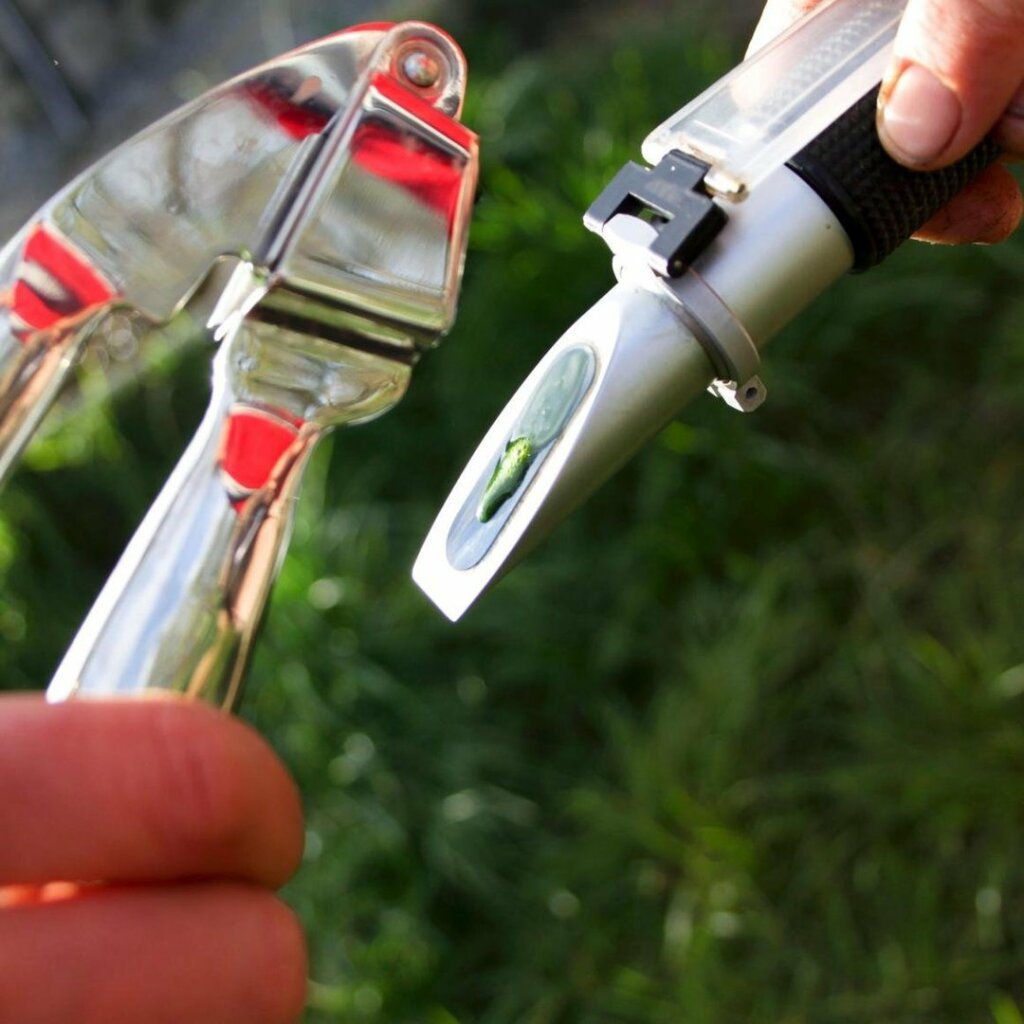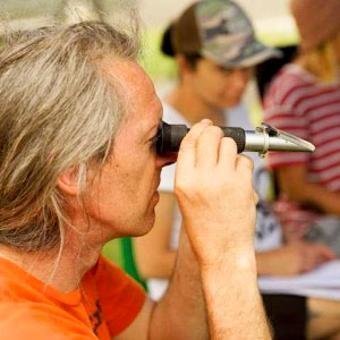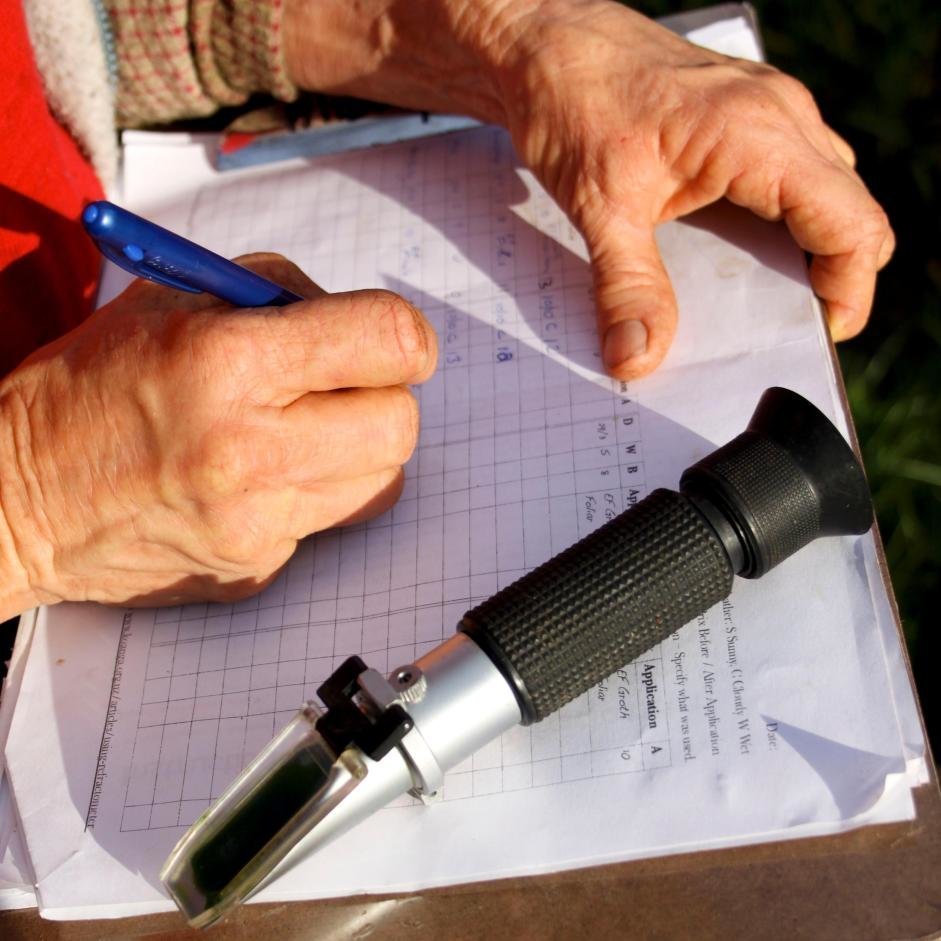The Refractometer is designed to measure the “Brix” of plant material. Brix readings tell you the sugar levels which is a reflection of the nutrient density, which is a reflection of how well you are providing the correct minerals in the correct relationships and also a reflection of how nourishing the food will be for you. The higher the nutrient density the healthier your DNA will be.
- Use instructions inside case to calibrate refractometer
- When you pick your plant material for testing pick a few pieces of leaf from the 3rd leaf out from the middle of a few plants. (Be consistent, it will help to achieve meaningful readings), put these pieces of leaf in your hands and rub hands together to break up the cells in the leaves as much as possible. When tissue is very damaged place in a garlic crusher and squeeze 1 drop of juice onto the refractometer plate.
- When you look through the lens you will see a scale from 0 upwards. If the line between the white and blue is very fuzzy, that is a sign that you have good available calcium levels. You can easily read the brix levels in the eye piece.
- Either use our spreadsheet or design your own to keep a track of collected data. It takes a series of data collections to begin seeing patterns, don’t jump to conclusions after one test!
- Understand that your brix readings will be affected by the time of day so try to always take them at a regular time each week. The best time is between 11:00am and 4:00pm. The readings at the end of the day will be higher because plants collect sugars in their leaves as they photosynthesis during sunlight. As the sun goes down around half of the sugars (containing the minerals) are sent back down to the roots to attract and feed the micro organisms in the soil.
- High water levels in the soil affects brix readings, unless the brix is very high and very stable. Make a note of the month and if it has been very sunny or wet etc so you can see these patterns.
- If you are getting very high and very low readings on the same plant at different times of the day it could be that the brix is unstable meaning you are getting there, but not quite there yet with your soil health. Consistent readings over 12-14 means you are growing food capable of nourishing the cells of your body, and if the readings stay up after picking for a day or two then you have pretty stable brix which means the food holds it’s quality, and so shelf life after picking, for longer.
- Use this sheet of Reams brix levels to see what are generally regarded as low medium and high readings for individual crops.
- I prefer to take readings on the day I do my foliar feeding so that I can retest an hour after foliar feeding to see if the foliar spray I used was beneficial to the plant. If it is, the Brix goes up. Whatever makes the brix go up is what is missing, the limiting factor…very often calcium. If it is, then I may spray that over the entire crop or garden.






